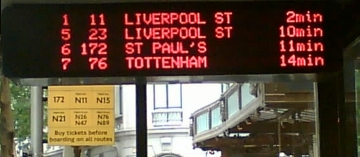There's a tendency among bike advocates to champion the delineation of a "bike space" even without any actual space being created. You know, "if there's room for a bike lane" without changing anything else on the street. At best you get no benefit, and at worst you're given a "safe space" that isn't safe at all. This bike lane is almost entirely in the door zone, which is why these users are staying to the far left. But cars will pass too closely (up against the line) so they really should be riding outside the bike lane for safety, but then motorists become arrogant and hostile as they think you're being a jerk.
That's when cars are parked flush against the curb. Even in the summer they often intrude into the bike lane. But in the winter the lane is completely taken away for car parking. Bike lanes in Boston are only open 1/3 of the year. And it's always the bikers and pedestrians who lose out; car drivers get plowed streets and the same ability to park their personal property: who cares if anyone else has trouble getting around?
You can see the city's priorities. They claim to be a "world-class bicycling city" where "the car is no longer king" but what this street design really does is appease some bicycle advocates while maintaining a car dominant streetscape. Fail.
This major business district is also a major transportation corridor. The 39 bus seen here is one of the highest ridership MBTA lines, yet all winter it struggles to pass arrogantly parked cars, often waiting for opposing traffic before it can cross the centerline. Buses often can't pass each other.
In a fairer city, cars that park outside the designated space would be ticketed and towed immediately. Better yet, restrict parking in certain spaces that can be used to store the snow that the city should be removing from sidewalks.






